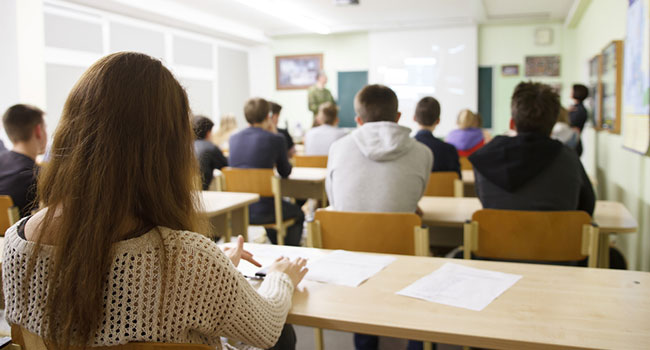
Study: Policies Aimed at Preventing School Violence Can Have Negative Impact on Students of Color
The research advocates for a restorative justice approach to crisis prevention instead of doubling down on zero tolerance discipline policies.
- By Haley Samsel
- October 31, 2019
School safety policies formed in the wake of increased school shootings may exacerbate disparities in how students of color and white students are disciplined by administrators, according to findings in a new study by researchers at the Washington University in St. Louis.
The study, titled “Disparate Impacts: Balancing the Need for Safe Schools With Racial Equity in Discipline,” digs into crisis prevention strategies implemented by schools to prevent violence. Researchers looked into policy difference within schools, where educators sometimes implement policies with discretion; and between schools, where policies are often influenced by racial and class segregation.
In addition, the study addresses how discipline policies can indirectly affect students who are not the subject of the consequences, but go to schools with “elevated” rates of discipline, according to a university release.
“School shootings, while rare, still occur despite these crisis prevention policies, which inadvertently lead to harsher punishment of racialized students, exacerbating racial inequity in American schools,” Odis Johnson, a sociology and education professor who was the first author of the study, said in the release.
Tragedies like those in Parkland, Florida and Newtown, Connecticut often shape the responses of school districts across the country. Administrators double down on policies that increase the amount of law enforcement on the premises, enacting zero tolerance discipline strategies and adding metal detectors and other security technology to keep students and staff safe.
The unintended consequence can often mean higher rates of discipline for students of color, particularly black children. Federal civil rights data released in 2018 showed that African-American students continue to be disciplined at disproportionate rates when compared to their peers.
“Our study highlights how the detrimental effects of crisis prevention policies extend beyond the misbehaving student to impact their peers, as entire school communities become punitive environments focusing on social control over academic learning,” Johnson said. “These indirect effects of crisis prevention policies contribute as significantly to racial inequity as the direct effects on disciplined students.”
Johnson and his fellow researchers recommend a restorative justice approach to addressing student behavior. Administrators, educators, parents and students work together to shift the “focus of discipline from punishment to learning” and make the student’s success a community responsibility.
“Restorative justice provides an approach to school safety that could encourage investment in school communities, and, ultimately, promote safer school environments,” Johnson said.
About the Author
Haley Samsel is an Associate Content Editor for the Infrastructure Solutions Group at 1105 Media.